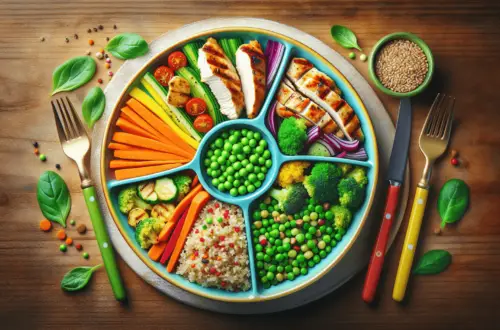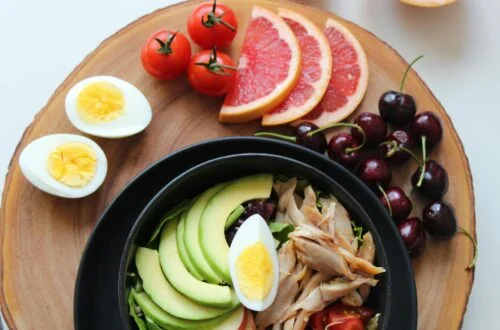Embarking on a journey to a healthier lifestyle can be both exciting and daunting, but understanding the Paleo diet could be your ticket to a more vibrant you. This approach mimics the eating habits of our ancient ancestors, emphasizing whole foods like lean meats, fruits, vegetables, nuts, and seeds while eliminating processed foods, grains, and dairy. By focusing on nutrient-dense, natural ingredients, you may experience improved digestion, boosted energy levels, and a clearer mind. Stick to the guidelines and you’ll find yourself reaping the rewards of a diet that aligns closely with what your body is naturally designed to thrive on. Have you ever found yourself wondering if the Paleo diet is the right choice for you? Maybe you’ve heard friends discuss their great results or you’ve seen it pop up in articles online. Whatever your reason, you’re in the right place to dive deep into what the Paleo diet is all about and discover its benefits and rules.
What is the Paleo Diet?
The Paleo diet, often referred to as the Paleolithic diet, caveman diet, or stone-age diet, is a modern nutritional plan that seeks to emulate the eating habits of our ancestors during the Paleolithic era, which dates back approximately 2.5 million to 10,000 years ago. The central concept of the Paleo diet is to consume foods that could theoretically have been hunted, fished, or gathered during these ancient times.
Why Go Paleo?
The rationale behind going Paleo stems from the belief that human genetics have not significantly evolved since the end of the Paleolithic era. Proponents argue that many chronic diseases and health issues prevalent today are a result of modern diets and a mismatch between our current lifestyle and the diet that our bodies are adapted to.
The Core Rules of the Paleo Diet
Understanding the rules of the Paleo diet can help you decide if it’s a good fit for your lifestyle. Let’s break these down:
What You Can Eat
The Paleo diet focuses on eating whole, unprocessed foods. Here’s a breakdown of what you can include:
| Category | Examples |
|---|---|
| Lean meats | Beef, chicken, turkey, pork |
| Fish and seafood | Salmon, trout, shrimp, scallops |
| Fruits | Apples, berries, bananas, oranges |
| Vegetables | Broccoli, carrots, spinach, kale |
| Nuts and seeds | Almonds, walnuts, sunflower seeds |
| Healthy fats | Olive oil, coconut oil, avocado oil |
What You Should Avoid
On the flip side, there are several food categories you will be advised to avoid:
| Category | Examples |
|---|---|
| Grains | Wheat, rice, oats |
| Legumes | Beans, lentils, peanuts |
| Dairy | Milk, cheese, yogurt |
| Processed foods | Snacks, fast food, packaged meals |
| Sugars | Candy, soda, pastries |
| Artificial additives | Preservatives, artificial sweeteners |
Moderation and Portion Sizes
While the Paleo diet doesn’t strictly regulate portion sizes, it’s important to listen to your body. Eating until you’re satisfied and not stuffed is key. The diet naturally leads to high satiety due to the nutrient-dense foods it focuses on.

Benefits of the Paleo Diet
Embarking on the Paleo diet can have a range of positive effects on your health and well-being. Below are some of the notable benefits:
Improved Nutrient Intake
By focusing on whole, unprocessed foods, the Paleo diet enhances your intake of nutrients like vitamins, minerals, and antioxidants. For instance, an emphasis on fruits and vegetables increases your intake of essential vitamins such as vitamin C and E, and minerals like potassium and magnesium.
Better Weight Management
Many people find that the Paleo diet helps them lose weight or maintain a healthy weight. The elimination of processed foods and sugars reduces empty calories, while the high-protein content can aid in muscle building and repair.
Enhanced Digestion
The diet’s focus on fiber-rich fruits and vegetables can promote better digestion and reduce bloating. Avoiding grains and legumes, which some people find hard to digest, can also result in fewer digestive issues.
Improved Blood Sugar Levels
The Paleo diet can lead to more stable blood sugar levels by reducing refined sugar and carbohydrate intake. This stability can help reduce the risk of type 2 diabetes and improve overall energy levels.
Reduced Inflammation
Foods like lean meats, fish, fruits, and vegetables that are characteristic of the Paleo diet are known to have anti-inflammatory properties. Reducing inflammation can lower the risk of chronic diseases such as heart disease, cancer, and arthritis.
Better Heart Health
By emphasizing healthy fats and eliminating trans fats and processed foods, the Paleo diet can contribute to better heart health. Additionally, the increase in omega-3 fatty acids from fish and nuts can further promote cardiovascular well-being.
Common Misconceptions About the Paleo Diet
Understanding and debunking common myths about the Paleo diet can provide clearer insight. Here are a few misconceptions you may encounter:
It’s Just a Meat-Heavy Diet
While the Paleo diet does include a fair amount of lean meats, it’s far from being only about meat consumption. A balanced Paleo plate includes a variety of vegetables, fruits, nuts, and seeds, ensuring a diverse intake of nutrients.
It’s Too Restrictive
At first glance, the list of foods to avoid might seem limiting, but many people find the diet to be versatile and satisfying once they explore the range of allowed foods and recipes. Additionally, natural and whole ingredients often offer more flavors than highly processed options.
It Can’t Provide Enough Energy for Athletes
Some athletes worry they won’t get enough carbohydrates on the Paleo diet, but it’s actually possible to meet energy needs through high-carb vegetables and fruits such as sweet potatoes and bananas.
It’s Expensive
Yes, grass-fed meats and organic produce can be more costly. However, by prioritizing seasonal produce and planning meals ahead, you can manage costs more effectively. Furthermore, the diet emphasizes quality over quantity, potentially reducing waste and unnecessary expenditures.

Practical Tips for Following the Paleo Diet
Getting started on the Paleo diet can seem daunting, but with the right approach, you can ease into this new lifestyle smoothly. Here are practical tips to help you transition:
Meal Planning
Plan your meals for the week to ensure you have all the ingredients you need and to avoid last-minute unhealthy choices. Preparing your meals at home gives you better control over what you’re consuming.
Experiment with Recipes
Explore Paleo-friendly recipes to keep your meals varied and exciting. There are numerous cookbooks and online resources dedicated to Paleo cuisine that can inspire you.
Gradual Transition
If switching to the Paleo diet all at once feels overwhelming, try a gradual approach. Start by eliminating processed foods, then slowly cut out grains, legumes, and dairy.
Stay Hydrated
Adequate hydration is a crucial component of any diet. Drink plenty of water throughout the day, and consider herbal teas for variety.
Listen to Your Body
Every individual is different. Pay attention to how your body responds to the Paleo diet and make adjustments as needed. If certain foods cause discomfort, consider reducing or eliminating them.
Paleo Diet Variations
While the core principles of the Paleo diet remain consistent, there are several variations you might encounter that tweak specific elements to suit different needs and preferences.
Primal Diet
The Primal diet is similar to Paleo but allows for high-fat dairy products like butter and whole milk. It also tends to permit certain oils and tubers that might be restricted under strict Paleo guidelines.
Autoimmune Protocol (AIP)
This variation is designed for individuals with autoimmune diseases. It follows a more restrictive approach by eliminating additional foods thought to trigger inflammation, such as nightshades, eggs, nuts, and seeds.
Keto-Paleo Hybrid
Some people combine the Paleo diet with ketogenic principles, focusing on a low-carb, high-fat intake while still eliminating grains, legumes, and processed foods. This approach aims to achieve ketosis, where the body uses fat for energy instead of carbs.

Potential Downsides to Consider
While the Paleo diet has many benefits, it’s also important to be aware of some potential drawbacks:
Nutrient Gaps
Because the diet eliminates entire food groups, there can be a risk of nutrient deficiencies. For instance, avoiding dairy could lead to lower calcium intake. Ensuring a diverse and balanced intake of Paleo-approved foods can help mitigate this risk.
Social and Lifestyle Challenges
Following a Paleo diet can sometimes make social situations challenging, such as dining out or attending parties. Planning ahead and finding Paleo-friendly options can help navigate these scenarios.
Initial Adjustment Period
The transition to a Paleo diet can be tough initially, particularly if you’re used to consuming a lot of processed foods or grains. Symptoms like headaches or fatigue might occur as your body adjusts, but these usually subside after a period of adaptation.
Conclusion
Embarking on the Paleo diet can be a rewarding journey to better health if approached thoughtfully. By understanding the benefits and rules, and equipping yourself with the right tools and knowledge, you can make informed decisions that align with your health goals.
Remember, the Paleo diet is more than just a list of dos and don’ts. It’s a lifestyle shift towards eating more nutritious, whole foods and being mindful of what you put into your body. Whether you decide to fully commit or just incorporate some Paleo principles into your diet, the knowledge you’ve gained here will serve you well. Happy eating!






